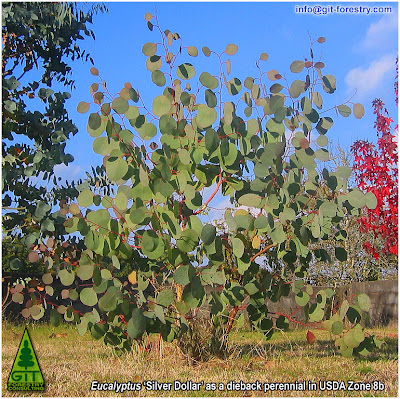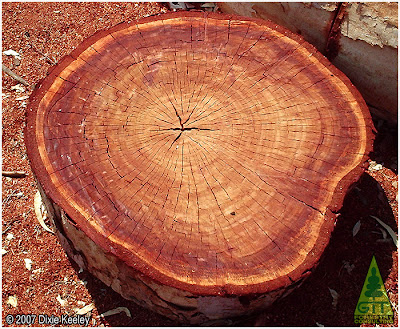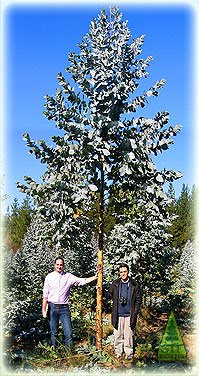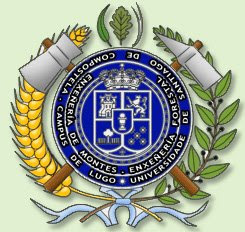WHO READS GIT's EUCALYPTOLOGICS?
 (click to enlarge)
(click to enlarge)GRATIAM HABEO, THANK YOU, DOMO ARIGATO, GRACIAS, DANKE, TAKK, DÊKUJI, TAK, MERCI, TACK, DANK U, GRAZIE, GRAZAS, GRACIES, KHAWP KHUN, OBRIGADO, KIITOS, DANKIE, TASHAKKUR, EFCHARISTO, SIKOMO, ISTUTI ...
For stopping by and reading our EUCALYPTOLOGICS sometime during 2007 to the following organisations:
A
AgroBioTech Park Ltd (BUL); Alpharma Inc (USA); Australian National University (AUS); Azabu University (JAP);
B
Banco Espanyol de Credito (SPA); Bankinter (SPA); Basf IT Services Gmbh (GER); Bauunternehmen Ing. Otto Ettinger (AT); Bayer Ag (GER); Beckman Coulter Inc (USA); Bergen University (NOR); Birmingham City Council (UK); Broome-Tioga Board of Cooperative Educational Services (USA); Bundesamt fuer Naturschutz (GER); Bundesanstalt fuer Zuechtungsforschung an Kulturpflanzen (GER); Bundesministerium fuer Verkehr Innovation und Technologie (GER);
C
California Polytechnic State University (USA); Centro de Innovación y Servicios Tecnológicos de la Madera de Galicia (SPA); Charles Darwin University (AUS); City of El Paso (USA); City of Orlando (USA); City of Seattle (USA); City of Westminster (CAN); City of Westminster Council (UK); Comision Nacional del Agua (MEX); Commission Europeenne (BEL); Commonwealth of Pennsylvania (USA); County of Riverside (USA); Cranfield Institute of Technology (UK); Czech Technical University (CZE);
D
Danish Network for Research and Education (DEN); de Groene Prins (NL); Department of Agriculture for Northern Ireland (UK); Department of Veterans Affairs (USA); Derby City Council (UK); Deutsche Flugsicherung Gmbh (GER); Deutsche Steinzeug Cremer & Breuer (GER); Deutsche Zentrum für Luft und Raumfahrt (GER); Deutscher Wetterdienst (GER); Dickinson College (USA); Drei Banken Gmbh (GER); Dudley Metropolitan Borough Council (UK); Duke Power Company (USA);
E
East Carolina University (USA); Ecole Polytechnique (FRA); Edinburgh University (UK); Ence Group (SPA); Ergon Energy (AUS); Essex Corporation (USA);
F
Fondation RESTENA (LUX); Fairfax County (USA); Forschungszentrum Juelich Gmbh (GER); Forsyth County (USA);
G
General Mills (USA); Generalitat Valenciana (SPA); Georgetown University (USA); Goteborgs Universitet (SWE);
H
Heighley Gate Garden Centre (UK); Hewlett-Packard Company (USA); Hitachi Ltd. (JAP); Hogeschool Enschede (NL); Horsham District Council (UK); Horticulture and Food Research Institute Ltd (NZ); Houston Associates (USA);
I
IBM (USA); ING North America Insurance Corporation (USA); Institut de Génomique Fonctionnelle (FRA); Institut National de la Recherche Agronomique (FRA); Instituto Nacional de Tecnología Agropecuaria de Argentina, Concordia (ARG); Instituto Nacional de Tecnología Agropecuaria del Uruguay (UR); Instituto Tecnico Agrario Statual Carlo Gallina (IT); Intel Corporation (USA); Islamic Azad University of Lahijan (IR);
J
Junta de Castilla y Leon (SPA); Junta de Extremadura (SPA);
K
Kings School (UK); KLM Royal Dutch Airlines (NL); Kockums-ThyessenKrupp (SWE); Kungälv Energi Ab (SWE);
L
Lakehead University (CAN); Landratsamt Dachau (GER); Leicestershire County Council (UK); Loma Linda University (USA); London School of Hygiene and Tropical Medicine (UK); Louisiana State University (USA); Luxembourg Government (LUX);
M
Mahidol University (THA); Mairie de Toulon (FRA); Ministere de L’Agriculture (FRA); Mckinsey & Company Inc. (USA); Mead Corporation (USA); Medical University of South Carolina (USA); Medway Council (UK); Meteo-France (FRA); Michigan State Government (USA); Microsoft Corporation (USA); Mississippi Department of Information Technology (USA);
N
National Aeronautics and Space Administration (USA); National Park Service (USA); National Weather Service (USA); Navtrak Inc (USA); New Jersey Department of Transportation (USA); Norwegian University of Science and Technology (NOR); North Carolina State University (USA); Northern Ireland Civil Service (UK); New South Wales Department of Water Resources (AUS); Northrop Grumman Corporation (USA);
O
Office National des Forets (FRA); Oglethorpe Power Corporation (USA); Oregon Health & Science University (USA); Oxford University (USA);
P
Pacific Academy (CAN); Padre Dam Municipal Water District (USA); Papelera Nacional SA (PER); Patella Manufacturing Inc (CAN); Pennsylvania School for the Deaf (USA); Petrominerales Colombia Ltd (USA); Porter & Korvick P.a. (USA); Primabio (UK);
R
Radford City (USA); Raiffeisen Zentralbank (AT); Red de Supercomputacion de Galicia (SPA); Renault (FRA); Robert Bosch LLC - Bosch Corporation (USA); Rodbaston College (UK); Royal Botanic Gardens, Kew (UK); Royal Botanic Gardens Sydney (AUS); Rushmoor Borough Council (UK);
S
Scottish Enviroment Protection Agency (UK); Servicio Nacional de Sanidad y Calidad Agroalimentaria (ARG); Schweizerische Bundesbahnen SBB (CH); Sharp Electronics Europe Gmbh (GER); Siemens Ag (GER); Smithsonian Institution (USA); Sniace (SPA); Southern California Gas Company (USA); Sri Lanka Education And Research Network (SRI); St Petersburg Times (USA); Stadt Dortmund (GER); Stadt Muenster (GER); Staffordshire County Council (UK); State of Alaska (USA); State of Arkansas (USA); State of Georgia (USA); State of Ohio (USA); Sunlife Assurance Company of Canada (CAN); Swedish University of Agricultural Sciences (SWE);
T
Technical University Zvolen (SVK); Technische Universitaet Dresden (GER); Technological Educational Institute of Kavala (GRE); The Boeing Company (USA); The McCrone Group (USA); The Municipality of Oslo (NOR); The National Land Survey of Sweden (SWE); The Pentagon (USA); The Sommerville Group (USA); The University of Melbourne (AUS); The Weather Channel (USA);
U
United Technologies Corporation (USA); U.S. Bureau of Indian Affairs (USA); U.S. Environmental Protection Agency (USA); U.S. Fish and Wildlife Service (USA); Universidad Austral de Chile (CHI); Universidad Autonoma Chapingo (MEX); Universidad Autonoma de Nuevo Leon (MEX); Universidad Autonoma de Sinaloa (MEX); Universidad Cardenal Herrera (SPA); Universidad Politecnica de Madrid (SPA); Universidad de A Coruña (SPA); Universidad de Castilla La Mancha (SPA); Universidad de Chile (CHI); Universidad de Concepcion (CHI); Universidad de Extremadura (SPA); Universidad de Leon (SPA); Universidad de Santiago de Compostela (SPA); Universidad de Vigo (SPA); Universidad Nacional de Buenos Aires (ARG); Universidad Nacional del Sur (ARG); Universidade de Sao Paulo (BRA); Universitaet des Saarlandes Saarbruecken (GER); Universitaet fuer Bodenkultur, Vienna (AT); Universitaet Kiel (GER); Universitaet Osnabrueck (GER); Universitaet Stuttgart (GER); Universitat de Barcelona (SPA); Universite de Fribourg (CH); Universiti Malaysia Sarawak (MLY); University College London (UK); University of Aberdeen (UK); University of Berne (CH); University of California (USA); University of California Santa Cruz (USA); University of Delaware (USA); University of Helsinki (FIN); University of Kwazulu-Natal (RSA); University of Malawi, Zomba (MW); University of Massachusetts (USA); University of Nevada Reno (USA); University of Northern British Columbia (CAN); University of San Francisco (USA); University of Tasmania (AUS); University of Texas (USA); University of Toronto (CAN); University of Wales, Aberystwyth (UK); University of West Florida (USA); University of Wolverhampton (UK); University of Zurich (CH); Union College (USA); Uppsala Universitet (SWE);
V
Virginia Commonwealth University (USA);
W
Warwick District Council (USA); Washington County Oregon (USA); West Moreton Anglican College (AUS); Wells Fargo Bank (USA);
X
Xunta de Galicia (SPA);
Y
York University (UK);
Z
Zahnradfabrik Passau GMBH (GER)...

And last, but not least, thanks also to all those many other individual readers worldwide who have shared the eucalyptic spirit. You know who you are.
EUCALYPTOLOGICS: 2008 Readership (ongoing)
 Net Increase in Readership for GIT Forestry Consulting's EUCALYPTOLOGICS during early 2008. Majority of our readers are located in Europe & North America. (Statistics courtesy of Google Analytics)
Net Increase in Readership for GIT Forestry Consulting's EUCALYPTOLOGICS during early 2008. Majority of our readers are located in Europe & North America. (Statistics courtesy of Google Analytics)Quality matters, but what about quantity?
We are very pleased with the significant increase in our high profile readership. All in all, EUCALYPTOLOGICS is a highly specialised information resource targeted to a niche audience even if we try to deliver a mix of technical and non technical information to make it less harsh. We rather quality than quantity. But... According to Alexa, the Web Information Company, EUCALYPTOLOGICS has experienced a +650% traffic increase in the last 3 months and is steadily climbing its traffic rank. According to NetCraft estimates, there are currently some 160 million websites in the World Wide Web, of which roughly 70 million are active websites. Crossing both data sets, it can be roughly estimated that GIT Forestry Consulting's Eucalyptus Blog EUCALYPTOLOGICS is currently in the top 5% of the World Wide Web. Three months ago we were in the top 15%. It is a nice progress! (and even more considering we had never started a weblog before!) These results are very pleasing, but must be taken humbly. We are a very small grain of sand compared to the giant rolling stones of the Internet beach. And a niche information resource. Our aim must always be quality. GIT's Eucalyptology Topics
GIT's Eucalyptology TopicsClick to Read Full Story...
Click to Display Summary only...


 Fig. 1: Winter view of a 10 year old frost tolerant Eucalyptus cultivated forest at 800 m above sea level in Galicia (Northwestern Spain). (Click image to enlarge)
Fig. 1: Winter view of a 10 year old frost tolerant Eucalyptus cultivated forest at 800 m above sea level in Galicia (Northwestern Spain). (Click image to enlarge) Fig. 2: Winter view of a 7 year old frost tolerant Eucalyptus timber plantation at 750 m above sea level in Galicia (Northwestern Spain). (Click image to enlarge)
Fig. 2: Winter view of a 7 year old frost tolerant Eucalyptus timber plantation at 750 m above sea level in Galicia (Northwestern Spain). (Click image to enlarge) Fig. 3: Winter view of 3 year old frost tolerant Eucalyptus saplings at 700 m above sea level in Galicia (Northwestern Spain). (Click image to enlarge)
Fig. 3: Winter view of 3 year old frost tolerant Eucalyptus saplings at 700 m above sea level in Galicia (Northwestern Spain). (Click image to enlarge) Fig. 4: Winter view of a 5 year old frost tolerant Eucalyptus timber plantation at 600 m above sea level in Galicia (Northwestern Spain). (Click image to enlarge)
Fig. 4: Winter view of a 5 year old frost tolerant Eucalyptus timber plantation at 600 m above sea level in Galicia (Northwestern Spain). (Click image to enlarge)![]() Subscribe to receive EUCALYPTOLOGICS via RSS
Subscribe to receive EUCALYPTOLOGICS via RSS Subscribe to receive EUCALYPTOLOGICS via e-mail
Subscribe to receive EUCALYPTOLOGICS via e-mail





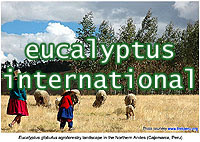

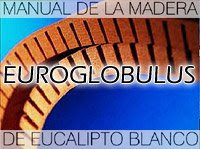









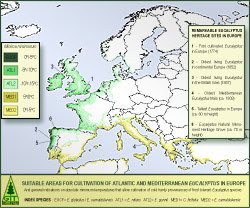
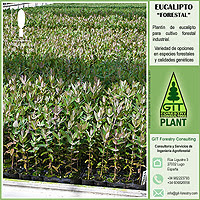
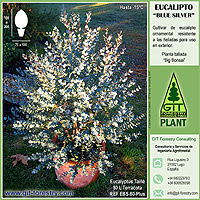














![Validate my Atom 1.0 feed [Valid Atom 1.0]](http://gus.iglesias.googlepages.com/valid-atom.png)






